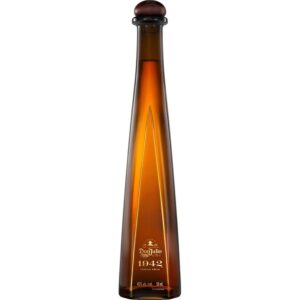Poker chips are small disks used in gambling games like poker. They come in various colors and denominations.
Poker chips play a crucial role in casino games. These small, round tokens represent different values, facilitating betting and raising stakes. Typically made from materials like clay, ceramic, or plastic, poker chips are designed for durability and ease of handling.
Each color signifies a specific denomination, enhancing game clarity and strategy. Casinos often customize chips with unique designs or logos, boosting security and branding. Players find chips more manageable than cash, promoting a smoother gaming experience. Understanding the value and use of poker chips can significantly enhance your gambling experience, making gameplay more efficient and enjoyable.

Credit: www.amazon.com
Types Of Poker Chips
Poker chips add excitement to the game. They come in different types, each with unique features. Choosing the right poker chip can enhance your playing experience. Let’s explore the various types of poker chips available.
Clay Chips
Clay chips are a popular choice among poker enthusiasts. They offer a great feel and sound, which many players love. Clay chips are made from a special blend of clay and other materials.
Features of Clay Chips:
- Weight: Usually between 8 to 11.5 grams
- Feel: Soft and smooth
- Sound: Distinctive “clink” sound
- Durability: High, with proper care
Benefits of Clay Chips:
- Authentic Casino Feel: Gives players a real casino experience.
- Customizable: Often used for custom designs and logos.
- Collectible: Many collect these for their unique designs.
Clay chips are mostly found in high-end poker sets. They are perfect for serious players who want a professional feel.
Plastic Chips
Plastic chips are commonly found in casual poker games. They are lightweight and affordable. Plastic chips are made from plastic materials, making them durable and easy to handle.
Features of Plastic Chips:
- Weight: Typically 2 to 5 grams
- Feel: Light and smooth
- Sound: High-pitched “click” sound
- Durability: Very high, can withstand rough handling
Benefits of Plastic Chips:
- Cost-Effective: Ideal for beginners or casual players.
- Easy to Clean: Can be washed and dried easily.
- Versatile: Suitable for various games, not just poker.
Plastic chips are great for family game nights or friendly poker sessions. They are easy to replace and maintain.
Composite Chips
Composite chips offer a blend of clay and plastic. They provide a balance of quality and affordability. Composite chips are made from a mix of clay and plastic materials.
Features of Composite Chips:
- Weight: Usually between 8 to 14 grams
- Feel: Heavier than plastic, lighter than clay
- Sound: Pleasant “clink” sound
- Durability: High, with moderate care
Benefits of Composite Chips:
- Affordable Quality: Offers good quality at a lower price than clay chips.
- Customizable: Can also be customized with designs and logos.
- Variety: Available in many colors and designs.
Composite chips are ideal for home games or semi-professional setups. They offer a nice balance for those who want good quality without breaking the bank.
Ceramic Chips
Ceramic chips are known for their high-quality and professional feel. They are used in many casinos worldwide. Ceramic chips are made from a high-quality ceramic material, giving them a unique texture.
Features of Ceramic Chips:
- Weight: Typically around 10 grams
- Feel: Smooth and polished
- Sound: Soft “clink” sound
- Durability: Very high, resistant to wear and tear
Benefits of Ceramic Chips:
- Professional Quality: Ideal for serious players and tournaments.
- Customizable: Perfect for custom designs and intricate artwork.
- Long-Lasting: Highly durable, can last for years.
Ceramic chips are perfect for those who want the best quality. They provide an excellent playing experience and are a great investment.
Choosing The Right Chips
Poker chips are essential for any poker game. They come in various weights, designs, and price ranges. Choosing the right chips can enhance your playing experience and make the game more enjoyable. Let’s explore the key factors to consider when selecting poker chips.
Weight Considerations
The weight of poker chips is a crucial factor. Heavier chips often feel more substantial and professional. Most casino-quality chips weigh around 10 to 14 grams. Here are some common weights:
- Lightweight Chips (4-8 grams): Ideal for casual games and beginners. They are easy to handle but may not feel as authentic.
- Standard Chips (8-10 grams): Suitable for home games. They offer a balance between weight and feel.
- Professional Chips (10-14 grams): Preferred by serious players. They provide an authentic casino experience.
Heavier chips tend to be more durable. They also stack better and are less likely to tip over. Consider your playing environment and the preferences of your group.
Design And Color
Design and color play a significant role in the appeal of poker chips. Aesthetically pleasing chips can enhance the game atmosphere. Here are some factors to consider:
- Traditional Designs: Classic designs often feature simple patterns and solid colors. These are great for a timeless look.
- Modern Designs: Contemporary chips may include intricate designs, multi-color edges, and unique graphics. They add flair to the game.
- Color Coding: Different colors usually represent different denominations. This makes it easier to keep track of bets and winnings.
Consider using a mix of colors to prevent confusion. Ensure the colors are distinct and easily recognizable. Custom designs can also add a personal touch to your poker set.
Budget Options
Budget is another essential factor. Poker chips come in various price ranges. Here are some options based on budget:
| Budget Range | Chip Type | Description |
|---|---|---|
| Low Budget | Plastic Chips | Affordable and lightweight. Suitable for beginners and casual games. |
| Mid-Range | Composite Chips | Made from a mix of materials. Offer better weight and feel. Ideal for regular home games. |
| High-End | Clay or Ceramic Chips | Top-quality and professional. Provide the best playing experience. Perfect for serious players and collectors. |
Consider how often you play and your level of commitment. Investing in high-quality chips can enhance your games and last longer. For occasional players, more affordable options may suffice.
Poker Chip Sets
Poker chips are essential for any poker game. They bring a sense of professionalism and authenticity to your poker nights. But not all poker chip sets are created equal. There are various types of poker chip sets to suit different needs and preferences. Let’s dive into the world of poker chip sets and explore the options available.
Standard Sets
Standard poker chip sets are perfect for home games and casual players. These sets usually include a mix of chips in different colors. Each color represents a different denomination, making it easy to keep track of bets.
A typical standard set includes:
- 300 to 500 chips
- Dealer button
- Two decks of cards
- Aluminum carrying case
Standard sets come in various materials. Plastic chips are lightweight and budget-friendly. Clay chips offer a more authentic casino feel. Composite chips blend the best of both worlds, offering durability and a good feel.
| Material | Advantages | Disadvantages |
|---|---|---|
| Plastic | Cheap, lightweight | Less authentic, less durable |
| Clay | Authentic feel, heavy | Expensive, can chip |
| Composite | Durable, good feel | More expensive than plastic |
Custom Sets
Custom poker chip sets let you add a personal touch to your games. You can choose the design, colors, and even the weight of the chips. Some companies offer full customization options, allowing you to print your name or logo on the chips.
Benefits of custom sets:
- Unique design
- Personalized experience
- Great for gifts or special events
Custom sets often include high-quality materials. Ceramic chips are popular for custom sets due to their durability and excellent print quality. Metal inserts can add extra weight and a premium feel to your chips.
| Customization Option | Benefits |
|---|---|
| Design | Unique look |
| Colors | Match themes |
| Weight | Custom feel |
| Personalized touch |
Travel Sets
Travel poker chip sets are ideal for players on the go. These sets are compact and lightweight, making them easy to carry. A typical travel set includes a smaller number of chips, usually between 100 to 200.
Travel sets often use plastic chips to keep the weight down. The cases are designed to fit easily into a backpack or suitcase. Some travel sets even include a foldable mat to create a playing surface anywhere.
Advantages of travel sets:
- Easy to transport
- Quick setup
- Perfect for trips
Travel sets ensure you can enjoy a game of poker no matter where you are. They make it easy to bring the excitement of poker to any location.
Chip Values And Denominations
Poker chips are essential for any poker game, representing money in a tangible form. Understanding the values and denominations of these chips ensures a smooth and enjoyable gaming experience. Each chip color and its value can vary based on the game and setting, making it crucial to familiarize yourself with common standards. Let’s dive into the details of chip values and denominations.
Color Coding
Color coding helps differentiate between the various denominations of poker chips. In most standard poker sets, each color represents a specific value. This visual differentiation is crucial for quick identification during the game.
Here are some common color codes used in poker chips:
- White: Typically represents the lowest denomination, often $1.
- Red: Usually valued at $5.
- Green: Commonly worth $25.
- Black: Represents $100.
- Purple: Often valued at $500.
- Yellow: Can represent $1,000 or more in high-stakes games.
These colors help players quickly identify the value of each chip. This system streamlines betting and ensures everyone stays on the same page.
Here’s a quick reference table for common chip colors and values:
| Chip Color | Value |
|---|---|
| White | $1 |
| Red | $5 |
| Green | $25 |
| Black | $100 |
| Purple | $500 |
| Yellow | $1,000 |
Value Assignments
Assigning values to poker chips is essential for maintaining game integrity. Different games and settings might have varying chip values. Generally, values are assigned based on the stakes of the game.
In a casual home game, you might see lower denominations. For example:
- White chips: $1
- Red chips: $5
- Green chips: $25
- Black chips: $100
In a casino setting, higher denominations might be used. This helps accommodate larger bets and pots. For example:
- White chips: $1
- Red chips: $5
- Green chips: $25
- Black chips: $100
- Purple chips: $500
- Yellow chips: $1,000
Assigning these values accurately is key to maintaining a fair and enjoyable game. It ensures everyone knows the stakes and can bet accordingly.
Game Variations
Different poker games might use different chip values and denominations. Understanding these variations helps you adapt to various game settings.
In a standard Texas Hold’em game, the chip values are often set as follows:
- White chips: $1
- Red chips: $5
- Green chips: $25
- Black chips: $100
In a high-stakes game, you might encounter different values:
- White chips: $1
- Red chips: $5
- Green chips: $25
- Black chips: $100
- Purple chips: $500
- Yellow chips: $1,000
Other poker variants like Omaha or Seven Card Stud might have their own unique chip values. Adapting to these variations ensures you’re always prepared for any game.
Knowing the chip values and denominations for different game variations is crucial for any poker player. It helps you understand the stakes and bet appropriately.
Care And Maintenance
Poker chips are more than just game pieces; they are a symbol of the casino experience. Proper care and maintenance can keep your poker chips in pristine condition for many years. This guide will help you clean, store, and understand the durability factors of your poker chips.
Cleaning Techniques
Cleaning poker chips is essential to maintaining their appearance and longevity. Here are some effective techniques:
- Warm Water and Mild Soap: Mix warm water with a small amount of mild soap. Dip a soft cloth in the mixture and gently wipe each chip. Avoid soaking the chips to prevent damage.
- Toothbrush Method: For stubborn dirt, use a soft-bristled toothbrush. Dip the toothbrush in soapy water and gently scrub the chips. This method is ideal for chips with intricate designs.
- Disinfecting Wipes: Use alcohol-based disinfecting wipes for quick cleaning. These wipes can remove germs and surface dirt without damaging the chips.
Important Tips:
- Avoid using harsh chemicals or abrasive materials.
- Dry the chips thoroughly after cleaning to prevent moisture damage.
- Test any cleaning solution on a small area first.
Storage Tips
Proper storage is crucial for maintaining the quality of your poker chips. Follow these tips for optimal storage:
- Use Chip Trays: Store your chips in specialized chip trays to keep them organized. These trays prevent chips from rubbing against each other, which can cause wear.
- Avoid Humidity: Store chips in a cool, dry place. Excessive humidity can cause chips to warp or mold.
- Protect from Sunlight: Prolonged exposure to sunlight can fade the colors of your chips. Store them in a shaded area or use opaque containers.
A table can help you compare storage methods:
| Storage Method | Advantages | Disadvantages |
|---|---|---|
| Chip Trays | Organized, prevents wear | Takes up space |
| Drawers | Easy access, out of sight | Potential for moisture buildup |
| Opaque Containers | Protects from sunlight | Limited visibility |
Durability Factors
Understanding the durability factors of poker chips can help you choose and maintain them better:
- Material Quality: High-quality materials like clay and ceramic make chips more durable. Plastic chips are less durable and wear out faster.
- Weight: Heavier chips are generally more durable. Standard casino chips weigh between 8 to 14 grams.
- Design and Finish: Chips with intricate designs and a smooth finish tend to last longer. They resist wear and tear better.
Consider these factors when purchasing poker chips:
- Brand Reputation: Choose reputable brands known for quality and durability.
- User Reviews: Read reviews from other users to understand the chip’s durability.
- Testing: If possible, test a few chips before buying in bulk.
By focusing on these care and maintenance tips, your poker chips will stay in excellent condition, providing many years of gaming enjoyment.

Credit: www.walmart.com
History Of Poker Chips
Poker chips are more than just colorful tokens used in card games. They represent a rich history and evolution in the world of gambling. Understanding the history of poker chips helps appreciate their significance in casinos and home games alike.
Origin Stories
Poker chips have their roots in the 19th century. In the early days of poker, players used gold nuggets, coins, and other valuable items as betting tokens. This led to confusion and disputes over the value of various items. To solve this problem, gamblers started using consistent, standard tokens.
By the mid-1800s, companies began producing clay chips specifically for poker. These clay chips were easier to stack and handle. They also had a uniform weight and size, making the game fairer. Early poker chips often had intricate designs to prevent counterfeiting.
Here’s a timeline of the early development of poker chips:
| Year | Development |
|---|---|
| 1800s | Use of gold nuggets and coins |
| 1850s | Introduction of clay chips |
| 1880s | Use of intricate designs to prevent counterfeiting |
Evolution Of Materials
The materials used to make poker chips have evolved significantly. Early poker chips were made from clay, which was both durable and easy to mold. Clay chips remained the standard for many years due to their weight and feel.
In the mid-20th century, composite materials began to appear. These chips combined clay with other materials, making them even more durable. They also allowed for more detailed designs and customization. Plastic chips became popular in home games due to their low cost and wide availability.
Today, most casino chips are made from a composite of clay and plastic. This blend offers the best of both worlds: the weight and feel of clay, with the durability and design flexibility of plastic. High-quality chips often include metal inserts for added weight and security features like UV markings to prevent counterfeiting.
Here’s a quick comparison of materials:
| Material | Advantages | Disadvantages |
|---|---|---|
| Clay | Great feel, easy to stack | Can chip or break |
| Composite | Durable, customizable | More expensive |
| Plastic | Cheap, widely available | Lacks authentic feel |
Cultural Significance
Poker chips hold a special place in popular culture. They symbolize the thrill and excitement of gambling. In movies, poker chips are often used to depict high-stakes games and dramatic moments.
Beyond entertainment, poker chips have also become a part of everyday language. Phrases like “all in” and “chip on your shoulder” have roots in poker and are used in various contexts. The design and color of chips can also represent different denominations and values, adding to their cultural significance.
In many casinos, poker chips are custom-designed to reflect the establishment’s brand. These designs often include unique logos and colors, making them collectible items. Some people even collect poker chips as a hobby, much like coin collecting.
Here are some ways poker chips are culturally significant:
- Movies and TV shows: Often featured in gambling scenes
- Language: Phrases like “all in” and “chip on your shoulder”
- Collectibles: Custom designs and limited editions
Using Chips In Gameplay
Poker chips are essential in poker games. Using chips in gameplay adds excitement and structure. Each chip represents real money, making every bet count. Understanding how to use chips effectively can enhance your gaming experience.
Betting Mechanics
Betting in poker is crucial. Each chip color and size has a specific value. Players place bets using these chips. The mechanics of betting involve several steps:
- Ante: Initial bet by all players.
- Blinds: Forced bets by two players before cards are dealt.
- Call: Matching the previous player’s bet.
- Raise: Increasing the previous bet.
- Fold: Giving up by not matching the bet.
A typical round of betting can be detailed in a table:
| Action | Description |
|---|---|
| Ante | All players place a small bet |
| Blinds | Two players place forced bets |
| Call | Match the last bet |
| Raise | Increase the bet amount |
| Fold | Give up and exit the round |
Understanding these mechanics ensures fair and exciting gameplay.
Chip Stacking
Stacking chips is a common practice in poker. It helps keep the table organized. Players stack chips in neat piles. Proper stacking has several benefits:
- Easy counting: Quick visual check of chip value.
- Orderly table: Keeps the playing area tidy.
- Reduces mistakes: Prevents accidental over or under-betting.
Players often use different stacking styles. Here are some common methods:
- Single Stack: All chips in one tall pile.
- Multiple Stacks: Separate stacks for different denominations.
- Decorative Stacks: Arranged in patterns or shapes.
Some players stack chips for psychological reasons. Tall stacks can intimidate opponents. Neat stacks show focus and organization.
Tournaments Vs. Casual Play
Using chips varies in tournaments and casual play. In tournaments, chip management is critical. Players start with a fixed number of chips. Losing all chips means elimination. Tournaments often have structured betting rounds.
Casual play is more relaxed. Players can buy more chips if they run out. There’s less pressure and more social interaction. Betting rules may be flexible.
Here’s a comparison table for clarity:
| Aspect | Tournaments | Casual Play |
|---|---|---|
| Chip Management | Critical | Relaxed |
| Betting Structure | Strict | Flexible |
| Pressure Level | High | Low |
| Social Interaction | Low | High |
Understanding these differences helps players adapt their strategies and enjoy the game more.
Diy Poker Chips
Poker chips are essential for any poker night. They add authenticity and fun to the game. Want to add a personal touch to your poker games? Try making DIY poker chips! Creating your own poker chips can be a fun and rewarding project. Plus, you get to customize them to fit your style.
Materials Needed
Gathering the right materials is the first step in making DIY poker chips. Here’s a list of what you’ll need:
- Clay or Polymer Clay – This will be the main material for your chips.
- Paint – Use acrylic paint to add color and design to your chips.
- Paintbrushes – Different sizes for detailed work.
- Rolling Pin – To flatten the clay.
- Cookie Cutter – Circular shape, the size of a poker chip.
- Baking Sheet – For polymer clay chips that need baking.
- Sandpaper – For smoothing the edges.
- Clear Varnish or Sealant – To protect the paint and give a glossy finish.
Having all these materials ready will make the crafting process smoother. You can find most of these items at your local craft store or online.
Design Ideas
Now that you have your materials, think about how you want your poker chips to look. Here are some design ideas:
- Classic Casino Style – Use bold colors like red, blue, and green. Add numbers or symbols in the center.
- Personalized Chips – Include your initials or a small logo. Use colors that represent you.
- Themed Chips – Create chips based on a theme, like sports, movies, or hobbies.
- Abstract Designs – Use patterns and shapes to create a unique look. Think about swirls, dots, and stripes.
Take your time with the design. Sketch your ideas on paper before you start painting. This will help you visualize your final product better.
Crafting Process
With your materials and design ready, you can start making your poker chips. Follow these steps:
- Prepare the Clay – Knead the clay until it’s soft. Use a rolling pin to flatten it to about 1/8 inch thick.
- Cut the Chips – Use the cookie cutter to cut out circular shapes. Make as many as you need.
- Bake the Chips – If using polymer clay, place the chips on a baking sheet. Bake according to the clay’s instructions.
- Sand the Edges – Once the chips are cool, use sandpaper to smooth the edges.
- Paint the Chips – Use your paintbrushes to apply your designs. Be patient and let each layer dry before adding more details.
- Seal the Chips – Apply a clear varnish or sealant to protect your designs. This will also give your chips a glossy finish.
Enjoy the process and take your time. Crafting your own poker chips can be a fun and creative activity. Happy crafting!

Credit: www.ebay.com
Frequently Asked Questions
What Are Poker Chips Made Of?
Poker chips are typically made of clay, composite, or ceramic materials. Clay chips offer a classic feel. Composite chips are durable and budget-friendly. Ceramic chips are high-quality and customizable.
How Many Poker Chips Do I Need?
For a standard poker game, 500 chips are sufficient for up to 10 players. This ensures a good mix of denominations and smooth gameplay.
Can You Wash Poker Chips?
Yes, you can clean poker chips using mild soap and water. Avoid harsh chemicals. Dry them thoroughly to prevent damage.
Why Do Poker Chips Have Different Colors?
Poker chips have different colors to indicate their value. This helps players and dealers quickly identify the denominations during the game.
Conclusion
Poker chips are more than just game pieces; they enhance the poker experience. Investing in quality chips elevates your game night. Make your poker sessions memorable with the right set of poker chips. Enjoy the blend of strategy and excitement that only poker can offer.




